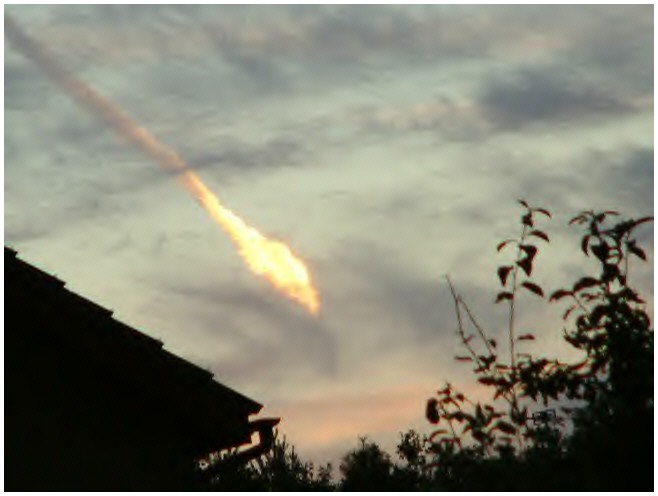
The 6 1/2-ton Upper Atmosphere Research Satellite had been projected to fall to Earth sometime Friday afternoon, but changes in the school bus-sized satellite's motion could push it to early Saturday, according to a NASA assessment of the spacecraft's path.

"The satellite's orientation or configuration apparently has changed, and that is now slowing its descent," NASA officials wrote in a morning status update. "There is a low probability any debris that survives re-entry will land in the United States, but the possibility cannot be discounted because of this changing rate of descent."
NASA expects about 26 large pieces of the UARS spacecraft to survive re-entry through Earth's atmosphere and reach the planet's surface. The biggest piece should weigh about 300 pounds (150 kilograms). The spacecraft is the largest NASA satellite to fall from space uncontrolled since 1979.
Two weeks ago, NASA officials said the the chances that a piece of UARS debris would hit any one of the nearly 7 billion people on the planet were about 1 in 3,200. However, the odds for a particular person being struck by UARS satellite debris would actually be about 1 in several trillion. And now that the time window for UARS' fall is narrowing, those stated odds are becoming less and less applicable.
As of 10:30 a.m. EDT Friday, the UARS satellite was flying in an orbit of about 100 miles by 105 miles (160 kilometers by 170 kilometers), and dropping.
The shifting forecasts are due to the reduced effects of solar activity.
"Re-entry is expected late Friday, Sept. 23, or early Saturday, Sept. 24, Eastern Daylight Time," NASA officials wrote. "Solar activity is no longer the major factor in the satellite's rate of descent."
The sun has had an extremely active week, one that has included several solar flares. High solar activity can cause the Earth's atmosphere to heat and expand, which can increase drag on a low-flying satellite like UARS, making it fall faster.
Late Wednesday, NASA predicted that the UARS satellite would not be over North America when it finally plunged down to the Earth's surface. That scenario was revised due to the slowing rate of the satellite's descent.
Where the UARS spacecraft will fall still remains anyone's guess. NASA orbital debris experts have said the satellite could fall anywhere between the latitudes of Northern Canada and southern South America, a region of Earth that encompasses much of the planet.
"It is still too early to predict the time and location of re-entry with any certainty, but predictions will become more refined in the next 12 to 18 hours," NASA officials wrote in the latest update.
Other experts issued their own forecasts for the satellite's fall: The Aerospace Corp. predicted that re-entry would come at 12:04 a.m. ET Saturday, plus or minus three hours. German expert Harro Zimmer estimated re-entry at 12:19 a.m. ET, plus or minus 90 minutes. Another widely respected satellite-watcher, Ted Molczan, cited a prediction converging on roughly 1:23 a.m. ET.
All these predictions produce a wide margin of error for the place where re-entry could occur. The satellite makes one orbit around the planet in less than an hour and a half.
NASA launched the UARS satellite in 1991 to study Earth's ozone layer and upper atmosphere. The satellite was decommissioned in 2005 and placed in a gradually decaying orbit.
This report was updated by msnbc.com's Alan Boyle with fresh predictions for the satellite's re-entry.
Source : http://today.msnbc.msn.com/id/44632366/ns/today-today_tech/t/nasas-falling-satellite-slows-now-could-hit-us/
